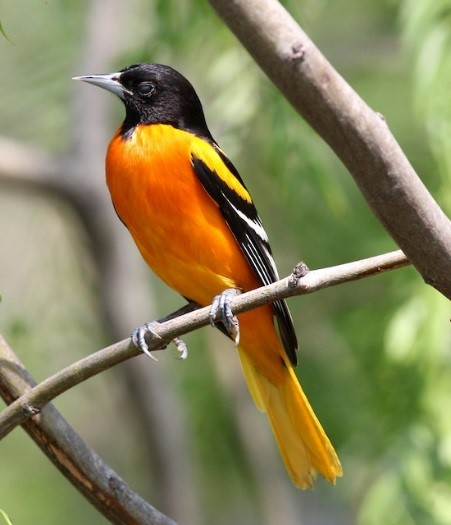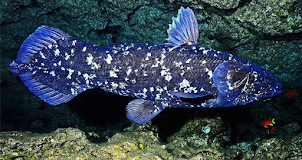Part 2 - Cry of the Lawin and Facts About the Philippine Hawk
Part 3 - Proposed World Wildlife Conservation Day Activities
.jpg) In less than a human lifetime, dozens of wildlife species have rebounded from the brink of extinction - and are establishing their territory on the countryside and in suburbs.
In less than a human lifetime, dozens of wildlife species have rebounded from the brink of extinction - and are establishing their territory on the countryside and in suburbs.3. Fireflies (They can be observed on empty lots adjacent to the Sacred Heart seminary, Novaliches QC
4. Pipit (popularized ina song of the same title, local counterpart of the hummingbird)
6. Skink or alibut Ilk (Twice in ten years I spotted this shiny ground lizard at home near the La Mesa watershed.) PHOTO right
8. Atlas moth (biggest of all insects by wing span, threatened by the gradual disappearance of native santol being replaced by the Bangkok variety)
9. Black Bear (Prowler in the kitchen and on garbage when hungry)
10. Canada Goose (Remember Fly Away Home ?)
11. Alligator (relative of the crocodile, we don't have alligators, instead crocodiles - they are coming back, too)
12. Gray Wolf (found in wastelands and open areas)
13. Deer (rebounded in no-hunting forests and grasslands)
14. Wild Turkey (particularly in the US and Canada)
15. Cougar (relative of the wolf in the US)
17. Raccoon (common in North America)
18. Reticulated python or sawa (a one-meter baby sawa was ensconced in a burnay or earthen jar.)
19. Rhinoceros beetle (appears like Triceratops, with three horns, apparently the male; the female has shorter horns)
20. Wildcat (In China the civet cat, counterpart of our musang, is invading homes. One reason for its comeback is that it eats fresh coffee bean and defecate the seed which is then ground into a special blend that commands a lucrative price.)
- There are only two northern white rhinos left in the world, both female. Yet there is still hope that we can preserve their lineage.
- The rarest animal in the world is the vaquita (Phocoena sinus). It is a kind of critically endangered porpoise that only lives in the furthest north-western corner of the Gulf of California in Mexico. There are only 18 left in the world. (Internet)
On a clear day we may see the lawin* hovering over our subdivision, alone or with a partner in dalliance, simply gliding and circling up in the sky, in a spectacular kind of show that this bird now categorized as threatened is still around. Its home is the La Mesa watershed, just across our subdivision. It is in deference to this bird that our association has adopted it as our symbol and acronym - LAWIN.
We thank our gazette editor Mr Fil Galimba who brought the idea of the organization, and Atty Riz Quiaoit for adopting Lawin as our symbol.
But what really does the lawin symbolize?
One early morning my granddaughter pointed at the bird in the sky. I explained what I know about the bird. Lawin symbolizes the young generations. It brings in the morning sun, it connects us grownups with the young generations. It gives our children a break from iPads and TV. .
One time children in the neighborhood in our place could not play their favorite game basketball. Somebody rebuilt their backboard, and games resumed. There one difference: the other player on the back bard is a big lawin with outstretched wings seemingly playing with the kids.
Nearby a garbage dump began to transform into a vegetable and herbal garden. The children called it Lawin Garden. It is a local version of the Phoenix bird rising from the garbage ashes.
The lawin has a peculiar cry while in flight - clear and loud whistle of two notes. But most often, it is a silent flyer with panoramic and telescopic vision.
It can see like a satellite monitor what is happening over its broad area of vision, yet able to focus on the slightest movement - a prey or an enemy.
Writers and artists to a great degree are like the lawin. Like the lawin, true writers and artists are a vanishing breed, they are an endangered species victim of instant and unguided social media, and worst assassination of journalists. The Philippines is compared to worn-torn countries like Syria and Afghanistan for having the highest number of killings in mass media.
The lawin writers and artists have "eyes for news and the arts," Their aerial perspective is holistic and contiguous. They see the multiplicity and unity of space and time, people and events. And they never veer away from their community which they watch over.
At the onset of organizing LAWIN, we did some research on our trust and functions, and on the long run - our projected goal.
Our reference is our own Gazette. Lawin is DEVELOPMENT COMMUNICATION. DevCom recognizes the power of communication as a catalyst for social development. It utilizes the tools and principles applicable in the community they serve for the advancement of society.
In an outline DevCom is
- Information dissemination and education
- Social Marketing - ideas, knowledge and wisdom
- Purposive communication - it sets targets
- Social mobilization - involvement and militancy
- Community improvement mainly on felt needs
- Positive change (social, political, economic, moral, environmental, cultural, etc.)
- Participatory development - bottom-up approach
- Humanities development - applied aesthetics
- Sentinel and vanguard of code of media
- Pathfinder - pioneering and visionary
What then would be our guiding principle in our program? It can be summarized as follows, for an anonymous source:
"If it is of high quality, people will respect you;If it is relevant, people ill need you;If it is measurable, people will trust you;If it is innovative, people will follow you."
If you were the lawin up in the sky over Greater Lagro, you are likely to see these -
1. the need to train students in our schools in the field of mass media and applied art to run their school paper.2. the need to take care of the trees, and plants more tree, to make Lagro an extension of the shrinking wildlife.3. the need to expand outdoor activities, participate in wholesome games and sports, creative activities.4. the need to guard Greater Lagro from the incursion of bad elements, vices, violations of human rights, peace and order.5. bringing in honors and prestige to the community through the talents of its citizens, particularly the young.6. unifying relationships of families, strengthening bonding, making the community senior citizen friendly, grandchildren friendly as well.

 Philippine hawk-eagles (Nisaetus philippensis) are raptors native only to the Philippines. "Lawin" translates to "hawk" in the Tagalog tongue. Philippine hawk-eagles survive in very low numbers, so their population is considered vulnerable.
Philippine hawk-eagles (Nisaetus philippensis) are raptors native only to the Philippines. "Lawin" translates to "hawk" in the Tagalog tongue. Philippine hawk-eagles survive in very low numbers, so their population is considered vulnerable.Philippine hawk-eagles (Nisaetus philippensis) are raptors native only to the Philippines.
Physical Appearance
Philippine hawk lawins are typically about 26 or 27 inches long. The top portions of their plumage are deep brown, and their lower portions are reddish-brown and adorned in black markings. Philippine hawk-eagles have pale throats, yellow limbs, deep gray beaks and dark crests. Their crests are made up of four to five feathers, some of which can reach 2.75 inches long. It takes about four years to develop their mature feathers. Fully grown Philippine hawk-eagles tend to have lithe physiques.
Living Environment
Philippine hawk lawins inhabit numerous islands throughout the Philippines, including Mindoro and Luzon. They haven't been confirmed as migratory, though they might occasionally travel between islands. They are prevalent around outer portions of forests, sometimes even in airy settings. Philippine hawk-eagles spend a lot of time hidden in the top layers of forests. They do a lot of high flying within their habitats.
Population
The number of Philippine hawk lawins in the wild is dropping swiftly. Their total population is thought to be 1,000 and 2,499 specimens, two-thirds of which are adults, according to BirdLife International. Key factors in their decline are the clearing of trees for logging, farm animals, and farming expansion in general. People also sometimes hunt Philippine hawk-eagles. Efforts to conserve this species include captive reproductive programs and protected locations such as Bataan National Park.
Vocalization
The signature call of the Philippine hawk lawin is a clear, loud whistle of two notes. These birds call out over and over again, sometimes in intervals of three seconds.~
- Nature Walks: Explore local habitats, observe wildlife, and learn about their ecosystems.
- Educational Workshops: Attend talks and workshops to deepen understanding of conservation issues.
- Volunteer Work: Participate in habitat restoration, wildlife monitoring, and conservation projects.
- Wildlife Photography: Capture the beauty of nature while raising awareness about conservation.
- Documentary Screenings: Host or attend screenings that highlight the importance of wildlife protection.
- Art and Crafts: Express creativity by creating artwork inspired by wildlife and nature.
- Tree Planting: Contribute to reforestation efforts, benefiting various species and habitats.
- Educational Games: Engage in games that teach about wildlife, ecosystems, and conservation.
- Online Campaigns: Utilize social media to spread awareness and encourage action for wildlife.
- Donations: Support conservation organizations financially to aid their efforts.
- Javan Rhinos. ...
- Amur Leopard. ...
- Sunda Island Tiger. ...
- Mountain Gorillas. ...
- Tapanuli Orangutan. ...
- Yangtze Finless Porpoise. ...
- Black Rhinos. ...
- African Forest Elephant.
- Sumatran Orangutan
- Hawksbill Turtle
50 Critically Endangered Species in the Philippines
1. Philippine Eagle | 11. Hawksbill Sea Turtle | 21. Long Polyp Green | 31. Green Turtle | 41. Calamian Deer |
2. Philippine Freshwater Crocodile | 12. The Philippine Tarsier | 22. False Flower Coral | 32. Black Shama | 42. Streak-breasted Bulbul |
3. Tamaraw | 13. Philippine Spotted Deer | 23. Sei Whale | 33. Panay Crateromys | 43. Catanduanes Narrow-mouthed Frog |
4. Walden's Hornbill | 14. Sulu Hornbill | 24. Blue Whale | 34. Negros Shrew | 44. Philippine Tube-nosed Fruit Bat |
5. Visayan Warty Pig | 15. Negros Fruit Dove | 25. Fin Whale | 35. Flame-templed Babbler | 45. Luzon Peacock Swallowtail |
6. Philippine Cockatoo | 16. Flame-breasted Fruit Dove | 26. Dinagat Hairy-tailed Rat | 36. White-winged Flying Fox | 46. Frog-faced Softshell Turtle |
7. Negros Bleeding-heart | 17. Giant Clams | 27. Limbless Worm Skink | 37. Mindoro Zone-tailed Pigeon | 47. Tawitawi Brown Dove |
8. Philippine Naked-backed Fruit Bat | 18. Cebu Flowerpecker | 28. Loggerhead Turtle | 38. Japanese Night Heron | 48. Mindoro Tree Frog |
9. Philippine Forest Turtle | 19. Golden-capped Fruit Bat | 29. Dog-faced Water Snake | 39. Apo Swallowtail | 49. Hazel's Forest Frog |
10. Dinagat Bushy-tailed Cloud Rat | 20. Net Coral | 30. Humphead Wrasse | 40. Spiny Turtle | 50. Mount Data Forest Frog |













1 comment:
nice opportunity
new year wishes 2025
new year messages 2025
new year quotes 2025
New year greetings 2025
Happy birthday wishes
merry christmas wishes
Post a Comment